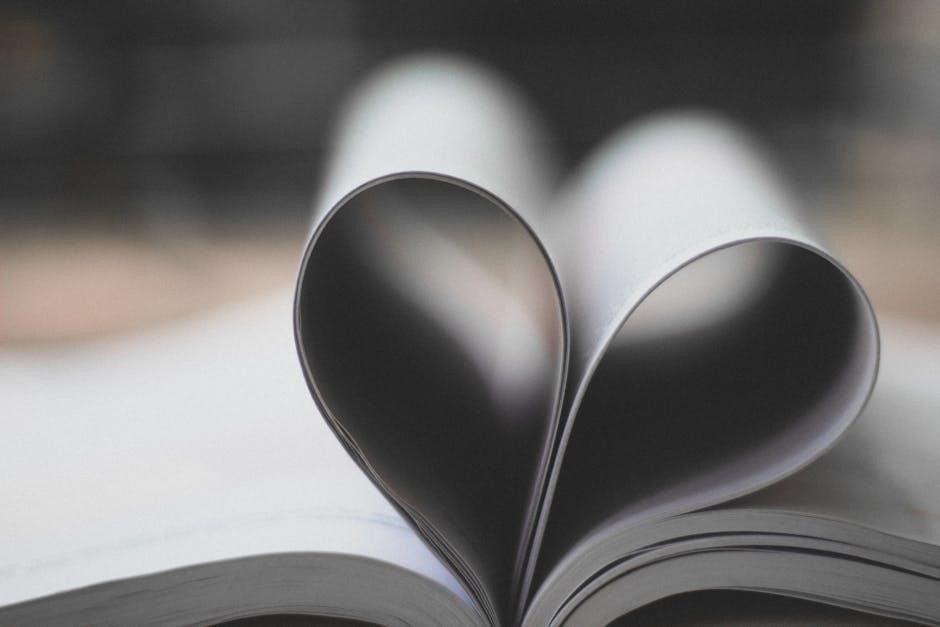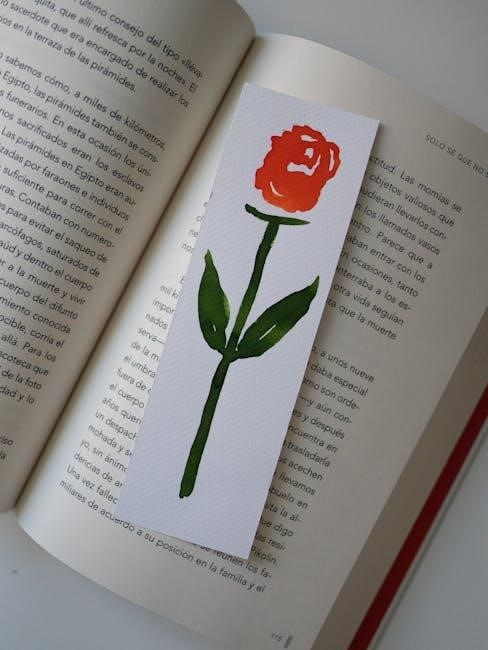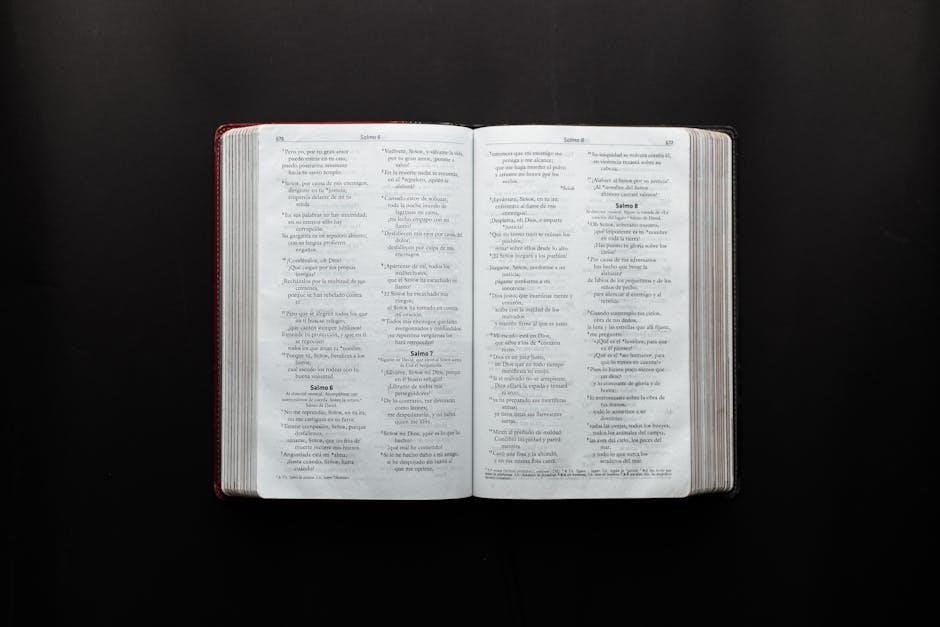Sadako and the Thousand Paper Cranes is a poignant children’s novel by Eleanor Coerr‚ telling the true story of Sadako Sasaki‚ a young girl affected by the Hiroshima bombing․ The book highlights themes of peace‚ hope‚ and resilience‚ while emphasizing the devastating consequences of war․ Sadako’s story‚ centered around the Japanese legend of a thousand paper cranes‚ has become a global symbol of peace and healing․ This enduring tale continues to inspire readers worldwide‚ fostering a deeper understanding of the importance of nonviolence and humanity․
Overview of the Book
Sadako and the Thousand Paper Cranes‚ written by Eleanor Coerr‚ is a heartrending children’s historical novel published in 1977․ Based on the true story of Sadako Sasaki‚ the book recounts her life as a survivor of the Hiroshima atomic bombing during World War II․ After developing leukemia from radiation exposure‚ Sadako draws strength from a Japanese legend‚ believing that folding 1‚000 paper cranes will grant her wish for health․ The novel vividly portrays her courage‚ hope‚ and resilience‚ while highlighting the tragic consequences of war․ It serves as a powerful reminder of the importance of peace and the enduring impact of Sadako’s legacy․
The True Story Behind the Novel
Sadako Sasaki was a young girl who survived the Hiroshima atomic bombing in 1945․ Ten years later‚ she developed leukemia from radiation exposure․ During her illness‚ she folded 1‚000 paper cranes‚ inspired by a Japanese legend promising health to those who completed the task․ Though she passed away at 12‚ her courage and determination became a symbol of peace․ Her story‚ documented in Eleanor Coerr’s novel‚ continues to inspire global peace movements‚ highlighting the human cost of war and the power of hope․

Historical Background
The atomic bombing of Hiroshima in 1945 devastated the city‚ causing widespread destruction and long-term health effects․ This event shaped the backdrop for Sadako’s story‚ highlighting the consequences of war and radiation exposure that later influenced her life and legacy;
The Atomic Bombing of Hiroshima
On August 6‚ 1945‚ the United States dropped the atomic bomb “Little Boy” on Hiroshima‚ Japan‚ causing unprecedented destruction․ The explosion instantly killed tens of thousands‚ with many more dying from injuries and radiation sickness․ The bombing razed the city‚ leaving survivors‚ including Sadako Sasaki‚ to face the long-term effects of radiation exposure․ This tragic event marked the first use of a nuclear weapon in warfare‚ leading to immense suffering and a global call for peace․ The bombing of Hiroshima remains a stark reminder of the horrors of war and the importance of nuclear disarmament․
Sadako Sasaki: The Real-Life Heroine
Sadako Sasaki‚ born in 1943‚ was a young girl who survived the atomic bombing of Hiroshima at just two years old․ Ten years later‚ she developed leukemia‚ a disease caused by radiation exposure․ During her illness‚ Sadako folded over 1‚000 paper cranes‚ inspired by a Japanese legend promising health to those who completed this task․ Her courage and resilience transformed her into a global symbol of peace and hope․ Sadako’s story‚ though tragic‚ continues to inspire millions‚ advocating for nonviolence and nuclear disarmament‚ ensuring her legacy endures as a beacon of humanity’s strength and compassion․

About the Author
Eleanor Coerr‚ a Canadian-American writer‚ was inspired by Sadako’s story during her visits to Japan‚ creating a poignant tale of courage and peace‚ impacting readers globally․
Eleanor Coerr: A Canadian-American Writer
Eleanor Coerr‚ born in Saskatchewan‚ Canada‚ later moved to the U․S․‚ earning degrees from American University and the University of Maryland․ A teacher‚ reporter‚ and columnist‚ she traveled extensively‚ including to Japan‚ where she discovered Sadako’s story․ Her 1977 novel‚ Sadako and the Thousand Paper Cranes‚ became a global peace symbol․ Coerr also wrote Jane Goodall and Meiko and the Fifth Treasure‚ focusing on remarkable women and girls․ Her work fostered empathy and education‚ leaving a lasting legacy after her 2010 passing․
Why Eleanor Coerr Chose Sadako’s Story
Eleanor Coerr was deeply moved by Sadako Sasaki’s courage and resilience in the face of tragedy․ During her travels to Japan‚ she learned about Sadako’s life‚ her battle with leukemia‚ and the symbolic thousand paper cranes․ Coerr recognized the universal themes of peace‚ hope‚ and the impact of war on innocence․ She sought to share Sadako’s story to educate children about historical events and promote nonviolence․ The emotional depth and inspiring message of Sadako’s journey aligned with Coerr’s passion for writing about remarkable girls‚ making it a compelling narrative to adapt into a children’s book․

The Plot Summary
Sadako and the Thousand Paper Cranes recounts Sadako Sasaki’s life‚ from her early happiness to her leukemia diagnosis after the Hiroshima bombing․ Folding paper cranes symbolizes hope․
Sadako’s Early Life and Happiness
Sadako Sasaki was born in Hiroshima‚ Japan‚ and grew up in a loving family․ She was an energetic and athletic child‚ excelling in sports‚ particularly running․ Her vibrant spirit and joyful demeanor made her a beloved figure among friends and family․ The novel captures her early years‚ portraying a carefree girl living a peaceful life before the devastating events of war․ Her story begins with a depiction of her happy childhood‚ highlighting the innocence and normalcy that were soon disrupted by the atomic bombing of Hiroshima․
The Onset of Sickness and Leukemia
Sadako’s life took a tragic turn when she began experiencing severe dizzy spells and fatigue․ Diagnosed with leukemia‚ a result of radiation exposure from the Hiroshima bombing‚ her health rapidly deteriorated․ Despite her bravery‚ the disease progressed‚ forcing her to spend much of her time in the hospital․ Her family and friends watched helplessly as her vibrant spirit faded․ The novel poignantly portrays her struggle with illness‚ highlighting the devastating impact of radiation sickness on her young life and the emotional toll it took on those who loved her․
The Legend of the Thousand Paper Cranes
Sadako learned of a traditional Japanese legend: folding 1‚000 paper cranes (senbazuru) could grant a wish‚ often for health or longevity․ Inspired by this belief‚ she began creating cranes while hospitalized‚ hoping to recover from leukemia․ Each crane symbolized hope‚ peace‚ and her desire to live․ The process became a source of comfort and purpose‚ showcasing her resilience․ Though she faced physical limitations‚ her determination to complete the cranes highlighted her unwavering spirit and faith in the legend’s power․ This tradition has since become a global symbol of peace‚ tied to her enduring story․
Sadako’s Death and Legacy
Sadako Sasaki passed away on October 25‚ 1955‚ at just 12 years old‚ due to leukemia caused by radiation exposure․ Her death deeply moved her community‚ inspiring a wave of peace activism․ Classmates completed the remaining cranes‚ burying them with her․ Sadako’s story became a powerful symbol of the consequences of war and the hope for peace․ A statue in Hiroshima honors her‚ surrounded by paper cranes sent from around the world․ Her legacy endures‚ inspiring global peace initiatives and reminding future generations of the importance of nonviolence and humanity․
Themes and Symbolism
Themes include peace‚ hope‚ and resilience‚ while symbolism centers on paper cranes‚ representing healing and wishes․ The novel underscores the human cost of war and the power of courage․
Peace and Nonviolence
Peace and nonviolence are central themes in Sadako and the Thousand Paper Cranes․ Sadako’s story serves as a powerful anti-war statement‚ highlighting the tragic consequences of nuclear warfare․ The novel emphasizes the importance of promoting peace and understanding to prevent future atrocities․ Sadako’s courage and determination to fold paper cranes symbolize her wish for a world free from conflict․ Her legacy continues to inspire global peace movements‚ reminding readers of the devastating effects of war and the need for nonviolent solutions․ The book is a timeless call for harmony and humanity․
The Impact of War on Innocence
The Impact of War on Innocence is poignantly illustrated through Sadako’s story․ At just 12 years old‚ she fell victim to leukemia caused by radiation from the Hiroshima bombing․ Her life‚ once filled with joy and promise‚ was tragically cut short‚ highlighting the devastating effects of war on children․ Sadako’s innocence and vibrant spirit contrast sharply with the suffering she endured‚ underscoring the moral tragedy of war’s impact on the young․ Her story serves as a heart-wrenching reminder of the long-lasting consequences of conflict on innocent lives and the need for global peace․
Hope and Resilience
Hope and Resilience are central themes in Sadako’s story‚ as she clings to the belief that folding a thousand paper cranes will restore her health․ Despite her suffering‚ Sadako’s determination and spirit remain unbroken․ The act of creating cranes becomes a symbol of her resilience‚ offering her a sense of purpose and hope in the face of tragedy․ Even as her condition worsens‚ her unwavering resolve inspires those around her․ Sadako’s story teaches readers the power of hope and the strength of the human spirit‚ even in the darkest of times‚ leaving a lasting legacy of courage and inspiration․
The Symbolism of Paper Cranes
Paper cranes in Sadako’s story symbolize peace‚ hope‚ and healing‚ rooted in Japanese tradition․ The legend that a thousand cranes could grant a wish inspired Sadako to fold them during her illness․ Each crane represented her longing for health and her desire to live․ After her death‚ the cranes became a powerful symbol of peace‚ transcending borders and cultures․ Today‚ they are a global emblem of anti-war movements‚ reminding people of the devastating effects of nuclear warfare and the importance of striving for a peaceful world․ Sadako’s cranes continue to inspire hope and unity worldwide․

PDF Book Details
Sadako and the Thousand Paper Cranes is widely available in PDF format‚ including on platforms like Amazon․ The book‚ published in 1977‚ has a 4․8-star rating and over 100 reviews‚ highlighting its timeless appeal and emotional impact․ The PDF version ensures accessibility for global readers‚ preserving Eleanor Coerr’s poignant storytelling and the inspiring legacy of Sadako Sasaki․ Its digital format has made it easier for educators and readers to explore this powerful tale of hope and peace․ The PDF remains a popular choice for those seeking a convenient way to experience the story․
Publication and Availability
Sadako and the Thousand Paper Cranes was first published in 1977 by Eleanor Coerr‚ making it a beloved children’s historical novel․ The book is widely available in paperback and digital formats‚ including PDF․ Readers can access the PDF version through platforms like Amazon‚ where it has garnered a 4․8-star rating with over 100 reviews․ Its availability in PDF ensures global accessibility‚ allowing educators and readers worldwide to engage with Sadako’s inspiring story․ The book’s digital format has further amplified its reach‚ making it a popular choice for those seeking a poignant tale of hope and resilience․
Downloading the PDF Version
The PDF version of Sadako and the Thousand Paper Cranes is readily available for download from various online platforms‚ including Amazon and Google Books․ Readers can easily access the digital format‚ ensuring convenience and portability․ The PDF version maintains the original story’s emotional depth and historical significance‚ making it a popular choice for both educational and personal reading․ With clear formatting and readability‚ the PDF allows readers to engage with Sadako’s inspiring journey on any device․ Its availability has made the story accessible to a global audience‚ fostering a wider understanding of peace and resilience․
Cultural and Historical Significance
Sadako and the Thousand Paper Cranes holds profound cultural and historical significance‚ symbolizing peace and the tragic consequences of war․ The story‚ widely shared through its PDF version‚ educates readers about Hiroshima’s history and promotes global peace awareness‚ inspiring a movement against nuclear warfare․ Sadako’s resilience and the legend of the paper cranes have become universal symbols of hope and healing‚ bridging cultures and generations through its timeless message․
The Statue of Sadako and the Thousand Cranes
A statue honoring Sadako Sasaki stands in Hiroshima Peace Memorial Park‚ symbolizing her courage and the global quest for peace․ The statue depicts Sadako holding a paper crane‚ embodying her wish for healing and an end to nuclear warfare․ Thousands of paper cranes‚ folded by visitors worldwide‚ surround the statue‚ creating a powerful visual tribute to her legacy․ This memorial serves as a poignant reminder of the consequences of war and the enduring hope for a peaceful world․ It continues to inspire visitors‚ fostering a connection to Sadako’s story and its universal message․
Annual Tributes and Peace Movements
Each year‚ people worldwide honor Sadako Sasaki’s legacy through peace movements and tributes․ Thousands of paper cranes are folded and sent to Hiroshima‚ symbolizing hope for a nuclear-free world․ These gestures‚ inspired by Sadako’s story‚ are often part of global peace initiatives․ Schools and organizations use her tale to educate about the consequences of war and promote nonviolence․ Annual events‚ such as the Hiroshima Peace Memorial Ceremony‚ further amplify her message․ These efforts ensure Sadako’s spirit continues to inspire future generations‚ fostering a collective commitment to peace and understanding․ Her legacy remains a powerful symbol of humanity’s quest for harmony․

Educational Value
Sadako and the Thousand Paper Cranes is a powerful educational tool‚ teaching empathy‚ historical context‚ and the consequences of war․ It promotes peace education‚ fostering critical thinking and global awareness‚ while encouraging discussions on humanity and nonviolence․
Teaching the Book in Schools
Sadako and the Thousand Paper Cranes is widely used in schools to educate students about historical events‚ empathy‚ and peace․ The novel provides a personal connection to the Hiroshima bombing‚ making history accessible to young readers․ Teachers incorporate it into curricula to foster discussions on war’s impact‚ resilience‚ and global peace․ Classroom activities often include reflections on Sadako’s courage‚ the symbolism of paper cranes‚ and the importance of nonviolence․ The book bridges cultural understanding and encourages students to think critically about humanity’s shared desire for peace‚ making it a valuable tool for character and historical education․
Using the Story for Peace Education
Sadako and the Thousand Paper Cranes serves as a powerful tool for peace education‚ inspiring students to reflect on the consequences of war and the importance of nonviolence․ The story fosters empathy and understanding‚ encouraging young readers to embrace peace as a universal value․ Educators use Sadako’s journey to teach about historical conflicts‚ cultural diversity‚ and the resilience of the human spirit․ By exploring the symbolism of the paper cranes‚ students learn about activism and the impact of individual actions on global harmony․ This narrative bridges generations‚ promoting a shared vision of a peaceful world․

Legacy of Sadako’s Story
Sadako’s story has inspired global peace movements‚ educational initiatives‚ and artistic works‚ cementing her legacy as a symbol of hope and nuclear disarmament․ Her courage continues to motivate worldwide efforts for peace and understanding‚ making her story a timeless call for humanity․
Inspiring Global Peace Initiatives
Sadako’s story has become a powerful symbol of peace‚ inspiring global initiatives to promote nonviolence and nuclear disarmament․ Her determination to fold 1‚000 paper cranes has sparked movements worldwide‚ encouraging people to advocate for peace and remember the devastating effects of war․ Annual tributes‚ such as the sending of paper cranes to Hiroshima‚ honor her legacy and reinforce the importance of peace education․ Sadako’s courage continues to motivate individuals and organizations to work toward a world free from conflict‚ ensuring her message of hope endures for future generations․
Other Works Inspired by Sadako
Sadako’s story has inspired numerous adaptations and works‚ including a picture book titled Sadako with illustrations by Caldecott medalist Ed Young․ Additionally‚ her older brother‚ Masahiro Sasaki‚ wrote a biography‚ The True Story of Sadako Sasaki‚ offering a deeper insight into her life․ Other books‚ such as My Hiroshima by Junko Morimoto and Hiroshima No Pika by Toshi Maruki‚ also explore the bombing’s impact on children‚ aligning with the themes of peace and resilience․ These works ensure Sadako’s legacy continues to inspire and educate future generations about the importance of peace and the consequences of war․
Sadako and the Thousand Paper Cranes leaves a lasting impact‚ reminding readers of the power of hope and resilience․ Sadako’s story advocates for peace and unity‚ inspiring global change․
The Enduring Message of Sadako’s Story
Sadako and the Thousand Paper Cranes conveys a timeless message of hope‚ resilience‚ and the human spirit’s strength․ Sadako’s courage in the face of tragedy inspires global peace advocacy‚ reminding us of the devastating consequences of war․ Her story transcends generations‚ emphasizing the importance of nonviolence and unity․ The legend of the paper cranes has become a universal symbol of healing and peace‚ encouraging readers to reflect on the value of life and the need for a world free from conflict․ Sadako’s legacy continues to inspire‚ fostering a deeper understanding of humanity’s shared desire for harmony․
Final Thoughts on the Book’s Impact
Sadako and the Thousand Paper Cranes leaves a profound emotional and educational impact‚ inspiring readers to reflect on peace‚ humanity‚ and resilience․ The book bridges generations‚ fostering empathy and global dialogue․ Its vivid portrayal of Sadako’s journey has made it a cornerstone in peace education‚ encouraging children and adults alike to advocate for nonviolence․ The story’s universal message continues to resonate‚ reminding us of the devastating consequences of war while offering hope for a harmonious future․ This timeless tale remains a powerful tool for promoting understanding and unity worldwide․



